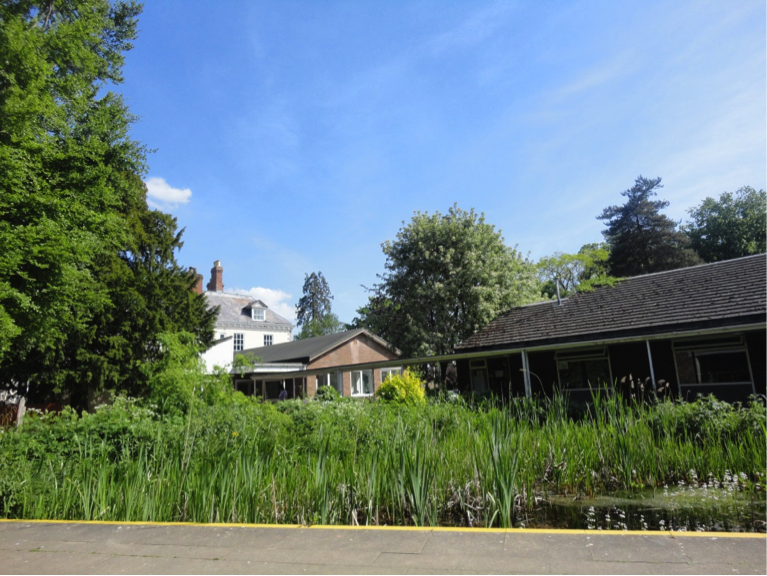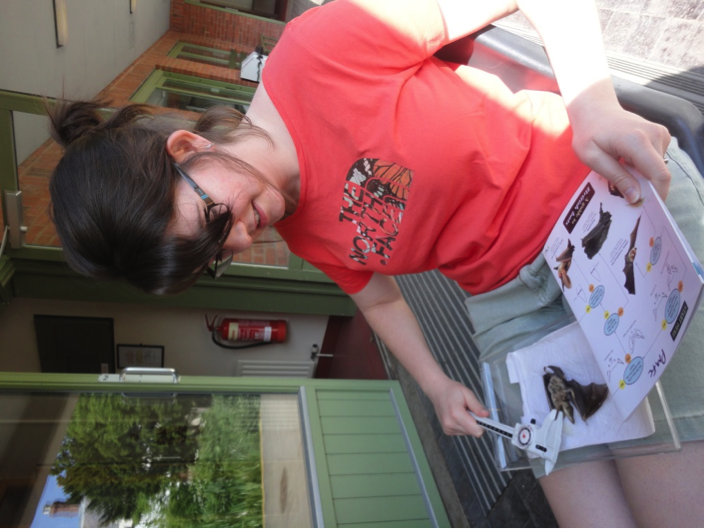
Four Day Bat ID Course
The Bat ID course was ran at the Preston Montford Field Studies Council Centre in Shrewsbury, led by Rebecca Collins.
Rebecca is very passionate about bats and their protection; it was inspiring to be taught by someone who has so much enthusiasm.
After the meet and greet, evening meal and usual introductions, we spent the first evening in the classroom talking about at bats across the world, getting an overview of the wide variety of different species and habitat preferences. Whilst this wasn’t especially helpful to the ID skills needed by a British ecologist, it was really interesting and gave an insight into micro and macro species and some of the differences to observe (if you are lucky enough to encounter a bat whilst abroad)!
Later on in the evening we walked around the grounds to listen out for any bat activity on our detectors. We heard a couple of pipistrelles and due to my previous courses and training, I could ID them through the detector.
Days 1 and 2
In the morning we had a classroom session on British Bat Species, ID features to look out for, bat ecology, habitat preferences and so on. This was really useful; I had done some of this with Gail (The Bat Lady) and going over the species again really cemented it for me. Everyone picks up on ID features slightly differently or describes them in a different way, and there are no rules to what is right and wrong. It’s just a case of whatever works best for me (you).
In the afternoon we looked at bats and the law, I had a fairly good knowledge of this already after reading the Bat Workers Manual and working for a consultancy with helpful colleagues that do their best to impart their knowledge on me. However, I learnt about some of the nuances of the various laws from other delegates; the law is that I think we can never know too much about, as it so important that you get it right for your clients.
The same evening, we travelled down to sunny Telford to use our detectors in a local wood refine our detector skills. This was great; there were several different species for us to get our ear in on while using the detectors (mine is an EM3).
Identifying dead bats (not as bad as it sounds)
Today we looked at dead specimens to see if we could put our ID into practice on real bats. We used a variety of different keys to see if we could work out what species the different bats were, e.g. from their forearm length, tragus shape and so on. I love doing this!
Later, we all trooped around the field centre and did scoping style bat surveys on the array of buildings located there. This was probably the most useful part of the course alongside the detector training, as these are the two aspects I needed the most help with and will undoubtedly use the most during my time at Arbtech.
My in house training is starting to pay off
As I’ve been attending scoping surveys with Jo (which you can read about in my previous journal entries), I had a pretty good idea what I was looking for and this really boosted my confidence. Again it was really useful to get tips and tricks from other bat workers on the course, for example with reference to the gaps and cracks that certain species of bat may be using. You quickly learn that they can fit in very small places; if you can fit your thumb in it then a bat could too!
A long day gets longer…
Very late at night, we spent time looking at bat poop (guano). Honestly, this was probably the least engaging session; the group had been out all day from around 8am. The session was still running at half 10 at night and all the bat poo started to look the same to our tired eyes. IT’s not a strong criticism but certainly, there’s only so much you can take in on one day and maybe bat poo is more of a first-thing-in-the-morning kind of session!
Big take home points from this session.. Bat poo clue = crumble test. Whilst you could become a bat poo expert i.e. species ID from the droppings, if you can remember that if you roll it between your fingers and it crumbles then it’s (very likely) a bat dropping, then you’re onto a winner. Obviously you can learn to ID some different species of bat by the droppings before you do this, so make sure you examine the droppings first before you go ahead and crush them!
…and longer…
Somewhat unbelievably, after a 14 hour day and less than a handful of hours sleep, we then braved a dawn survey the following morning. I knew from the scoping exercise that bats were using one of the converted barns as there were several indicators and to compliment that, we had all heard echolocation calls on a previous evening.
My first actual emergence!
I’d never actually seen a bat emerge from a building until this survey, so it was pretty great. I loved seeing them swoop down when they emerge and afterwards, when the sun had risen, the ‘chattering’ of pipistrelles. After doing a lot of reading around a subject, it’s special to witness that behaviour first hand.
Final thoughts
The course was ran as part of the MMU biological recording master’s degree. I sat the test anyway to see if I would pass. I did, so that’s a nice way to end a course; knowing that you’re leaving with a better understanding and more knowledge to take out with you on the field!
If I had to be critical the only advice I would give to improve future courses, is that at times Rebecca talked for too long on tangential subjects that (when it’s already late at night) weren’t perhaps very valuable.
However, overall I had a great time and the course definitely ‘moved the needle’ for me, increasing the depth of my knowledge and helping me tread the long and windy path that will eventually make an ecological consultant of me.
-Amy.
A message from Amy
Thanks for reading this instalment. The next journal blog will be up soon, as I chronicle my journey from ecology zero to surveyor hero. If you’d like an automatic notification of this, follow us on twitter (@superfastsurvey) or sign up to our mailing list below. Please also feel free to share this and leave any comments below. Are you trying to break into the ecological consultancy industry, or are you a graduate trainee like me? I’d love to hear from you.



There are no comments yet. Why not get involved?